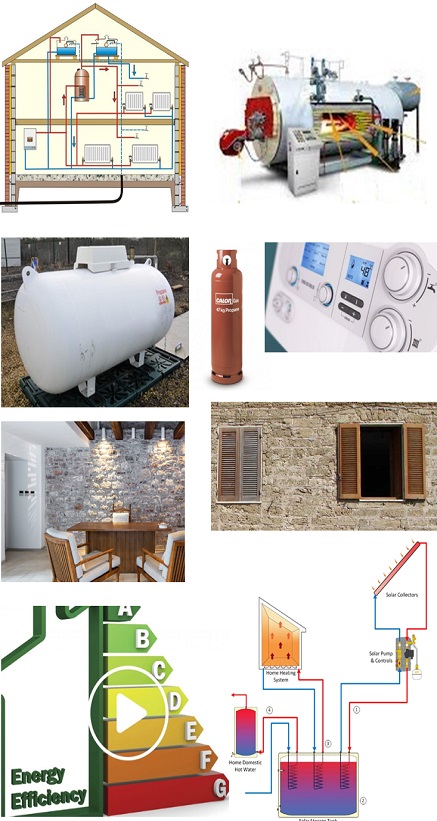Since the 1930's Gas & Oil Central Heating systems have been installed buildings in Northern Europe, with same technology used widely Southern Europe since the 1970's for urban heating.
Propane gas and Oil is used mainly in rural regions of Europe. Bottled Gas usually has a similar Energy price to Electricity.
These high calorific, high temperature systems will be gradually penalised by higher Carbon Taxes, as 'Fit for 55' is rolled out through Europe.
Typical Southern Europe Architecture has an advantage, as their buildings use 'Heavy Mass Structures', with a high volume of stone, concrete, brick and a cement render cladding inside and outside.
This has enabled the occupants to stay cool in hot summers. But used with Central Heating results in high Space Heating costs.
Throughout Europe, Building Regulations have improved, to ensure new Build construction is more energy efficient.
Combine all these facts together, and there is a opportunities available for lower temperature Space Heating Solutions throughout Europe.

The term 'Solar thermal' designates as 'a system' [70% efficient], in which the energy of the sun is captured specifically for the use of its heat.
The use of solar energy for water heating has been commercially available in Europe for over 50 years, and it is a very recognized mature technology.
The amount of solar radiation received (also called solar insolation) is measured in kWh/m2 (kilowatt hours per square meter) over a 24-hour period.

The solar heating system consists of 5 main components: solar collectors, pumping system (pump, expansion tank and valves), controller, sensors and piping.
Efficiency of Solar Collectors - here are different solar collectors on the market. You can see from the graph why we use heat pipes, which are the most efficient type of evacuated tubes.
We use only Heat Pipe Collectors in our Projects.

The heat pipes are aesthetic, as they are installed directly on the tiles. Also lightweight, as each collector has a maximum capacity of 5 liters.
Due to their circular shape, the heat pipes receive the maximum amount of solar radiation (unlike a flat panel), and the vacuum between the two glass tubes ensures that the energy from the solar radiation is not lost.
The tube that composes the heat pipe is made of borosilicate glass, a glass with high chemical resistance and thermal shock. The outside of the tube is transparent to allow solar radiation to pass through (more than 90% transmissibility), and the inside is covered with a selective coating (aluminium base) that offers high levels of solar absorption with a minimum of reflection.
Glass tube with internal copper heat conductor. If, for any reason, one of these tubes breaks, there is no leakage and replacement is very simple - about 10 minutes. it is easy to see if the tube has lost vacuum, as its normally silver barium deposit turns white when in contact with oxygen in the atmosphere.

The pumping system is a combination of several components, such as the circulation pump, valves, calibration instruments and expansion tank.
Solar System Controller - The controller works mainly with the circulation pump, based on the information transmitted by the temperature sensors.
Other control options allow you to control the auxiliary heating systems. We are currently developing one more option that will include a monitoring system - Intelligent Control.


The pumping system is a combination of several components, such as the circulation pump, valves, calibration instruments and expansion tank.
Solar System Controller - The controller works mainly with the circulation pump, based on the information transmitted by the temperature sensors.
Other control options allow you to control the auxiliary heating systems. We are currently developing one more option that will include a monitoring system - Intelligent Control.


